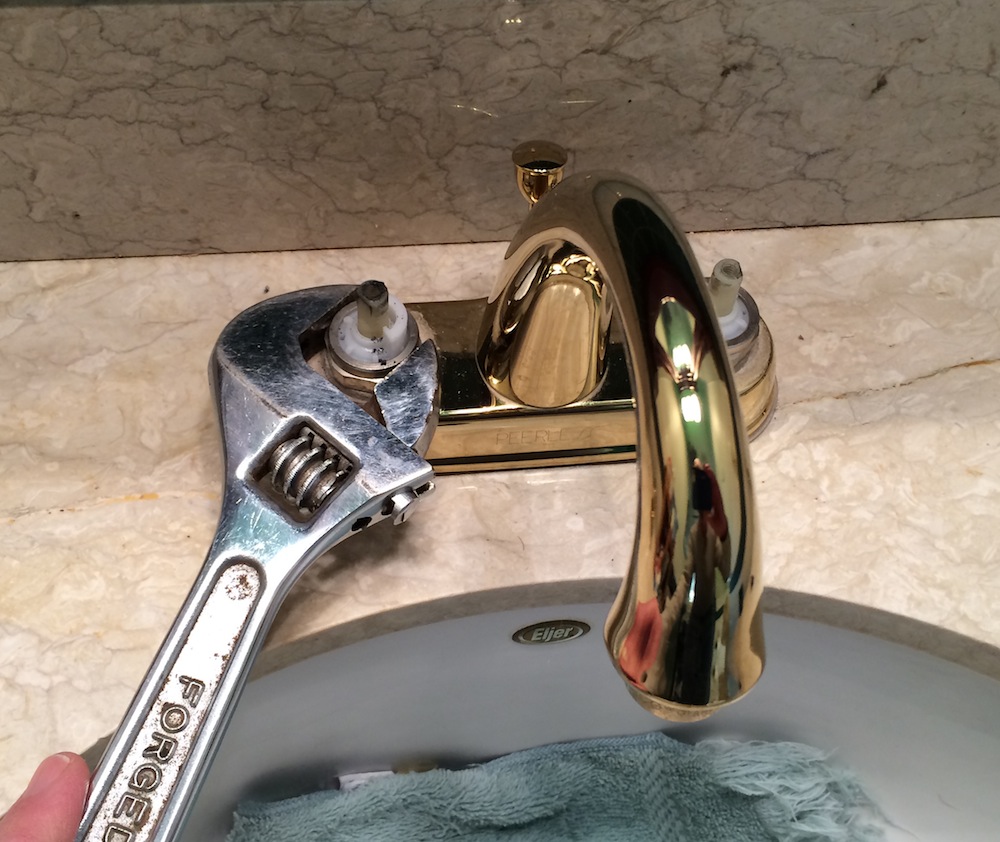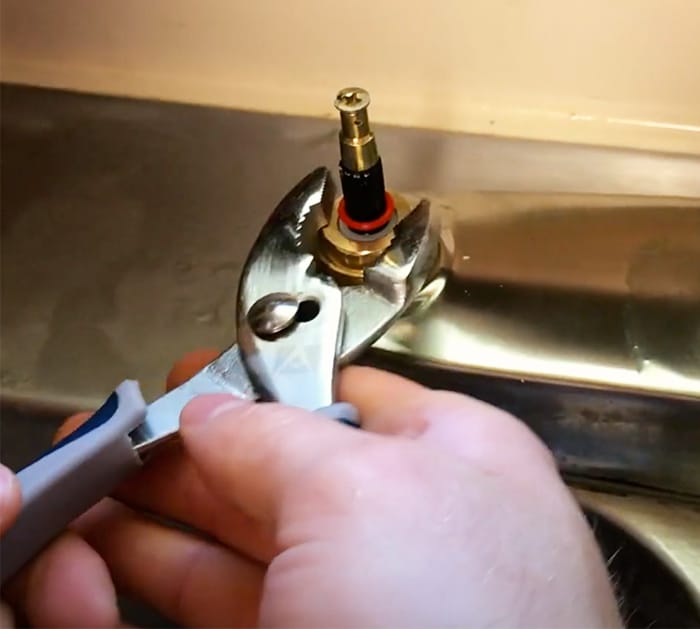An Benefits of Resolving a Dripping Faucet
An Benefits of Resolving a Dripping Faucet
Blog Article
This article in the next paragraphs on the subject of Should I Repair or Replace a Leaky Faucet? is relatively intriguing. Check it out for your own benefit and see what you think of it.

Trickling faucets may seem like a minor trouble, but their impact exceeds simply the aggravation of the sound. From wasting water to incurring unnecessary economic prices and health dangers, neglecting a trickling tap can cause various effects. In this write-up, we'll explore why it's vital to resolve this typical home concern immediately and efficiently.
Wastefulness of Water
Ecological Impact
Trickling faucets add considerably to water wastefulness. According to the Environmental Protection Agency (EPA), a single tap dripping at one drip per secondly can throw away greater than 3,000 gallons of water per year. This not just strains water sources yet also influences ecological communities and wildlife depending on them.
Financial Expenses
Boosted Water Bills
Beyond the ecological influence, dripping taps can blow up water costs considerably. The built up waste gradually converts right into greater energy expenditures, which can have been stayed clear of with prompt repairs.
Prospective Home Damage
Furthermore, extended dripping can lead to harm to components and surfaces surrounding the tap. Water build-up can trigger discoloration, rust, and even architectural problems if left neglected, leading to additional repair work costs.
Health Worries
Mold And Mildew and Mildew Development
The continuous presence of dampness from a trickling faucet creates an optimal environment for mold and mildew and mildew development. These fungis not only endanger indoor air top quality however also posture health and wellness threats, especially for people with breathing problems or allergies.
Waterborne Illness
Stationary water in dripping faucets can end up being a breeding ground for germs and various other pathogens, boosting the threat of waterborne conditions. Contaminants such as Legionella microorganisms prosper in stationary water, potentially leading to severe illnesses when ingested or inhaled.
DIY vs. Professional Repair service
Pros and Cons of DIY Fixing
While some may try to take care of a trickling tap themselves, do it yourself repairs come with their very own set of difficulties. Without appropriate understanding and tools, DIY efforts can aggravate the problem or cause incomplete repair work, prolonging the problem.
Advantages of Employing an Expert Plumber
Hiring a specialist plumber makes sure that the underlying reason for the dripping tap is addressed effectively. Plumbing technicians have the proficiency and equipment to identify and repair tap concerns effectively, conserving time and lessening the risk of further damage.
Step-by-Step Guide to Fixing a Dripping Tap
Devices Needed
Before attempting to fix a trickling faucet, gather the necessary devices, including an adjustable wrench, screwdrivers, substitute parts (such as washers or cartridges), and plumber's tape.
Typical Faucet Issues and Their Solutions
Recognize the kind of tap and the specific concern causing the drip. Usual problems consist of worn-out washers, rusty valve seats, or damaged O-rings. Refer to maker instructions or online tutorials for step-by-step support on repairs.
Preventive Measures
Normal Upkeep Tips
To prevent leaking faucets, do regular upkeep such as cleaning aerators, evaluating for leaks, and replacing worn-out parts promptly. Additionally, think about setting up water-saving gadgets or upgrading to much more efficient fixtures.
Value of Prompt Fixes
Attending to leaking faucets as soon as they're seen protects against additional water wastage and potential damages, eventually saving both water and cash in the future.
Effect On Property Worth
Perception of Well-Maintained Building
Preserving a building in good condition, including attending to maintenance problems like trickling faucets, boosts its perceived value and worth among prospective purchasers or lessees.
Influence on Resale Value
Features with well-maintained plumbing fixtures, including faucets, command greater resale worths in the property market. Resolving dripping taps can add to a favorable impact throughout residential or commercial property evaluations and negotiations.
Environmental Responsibility
Specific Payment to Preservation
Taking obligation for fixing dripping taps lines up with wider efforts towards water preservation and ecological sustainability. Every individual's activities collectively make a significant effect on preserving priceless resources.
Lasting Living Practices
By prioritizing timely repairs and taking on water-saving behaviors, individuals add to lasting living practices that profit both existing and future generations.
Conclusion
Attending to a trickling faucet exceeds plain ease; it's a vital step toward saving water, minimizing economic prices, and safeguarding health and home. Whether with DIY repair services or expert help, acting to fix trickling taps is a little yet impactful method to promote responsible stewardship of sources and add to a healthier, more lasting future.
Most Common Reasons for a Leaky Faucet and How to Stop the Drip
Whether it’s your kitchen faucet leaking or a bathroom faucet leaking, one leaky faucet can waste anywhere from three to 30 gallons of water every single day. If the constant drip-drip-drip doesn’t get your attention, your water bill will. The good news is that, by following a few simple steps, chances are pretty good you can fix the problem yourself.
Why is it dripping?
Before you start taking things apart, let’s break down some of the most common causes of a leaky faucet.
Bad O-ring.
A cartridge is a valve that controls the flow of water into the faucet spout. On cartridge faucets there’s an O-ring—the little disc attached to the stem screw that holds the faucet handle in place. If it’s loose or worn-out, it can cause your sink handle to leak. Of course, the cartridge itself could be worn out. If that’s the case, make sure you replace it with the exact same kind.
Corroded valve seat.
The valve seat connects the faucet and the spout. If the leak seems to be coming from the spout, it might be because a buildup of water sediment has corroded the valve seat.
Worn-out washers or seals.
A leaky spout could be caused by a bad washer that rests against the valve seat. It’s just a matter of time before friction takes its toll. It could also be the wrong size washer or one that’s been installed incorrectly. Water sediments can also corrode inlet and outlet seals.
Water pressure.
If the faucet only drips now and then, or when you turn the handles a certain way, you should probably check your home’s water pressure.
Loose or broken parts.
The adjusting ring and packing nuts in the stream screw can become loose over time, causing your sink handle to leak. Try tightening or replacing the packing nut. If the leak is coming from the pipes underneath the sink, you probably have a broken pipe or fitting. If that’s the case, you should definitely call a plumber.
Know your faucet.
Faucets come in a variety of types. Each one has its own assembly—and its own possible causes of leaks. Learning about the four most common kinds of faucets will help you know how to take them apart and make any repairs.
How to stop a leaky faucet
Fixing that leaky faucet doesn’t have to take a lot of time, money, or expertise. It’s usually a simple matter of replacing a worn-out washer or gasket, a loose O ring, or another part. Chances are really good you can do this yourself if you follow these simple steps.
Shut off the water.
Before you tackle the faucet, cut off the water supply to the sink. There should be one valve for hot and one for cold. Hand-turn them clockwise with your hands till they close. If there are no valves under the sink, head to the basement and shut off the main water supply to the house. Then turn on the faucet until it empties out the water that’s still in the line and you’re ready to start. It’s a good idea to cover the sink drain with a plug or a rag so you don’t lose any small pieces and parts while you’re working.

I'm just very fascinated by 4 Common Reasons for a Leaky Faucet and I really hope you enjoyed my blog posting. Do you know about somebody else who is sincerely interested in the subject? Be sure promote it. Thank you for going through it.
Report this page